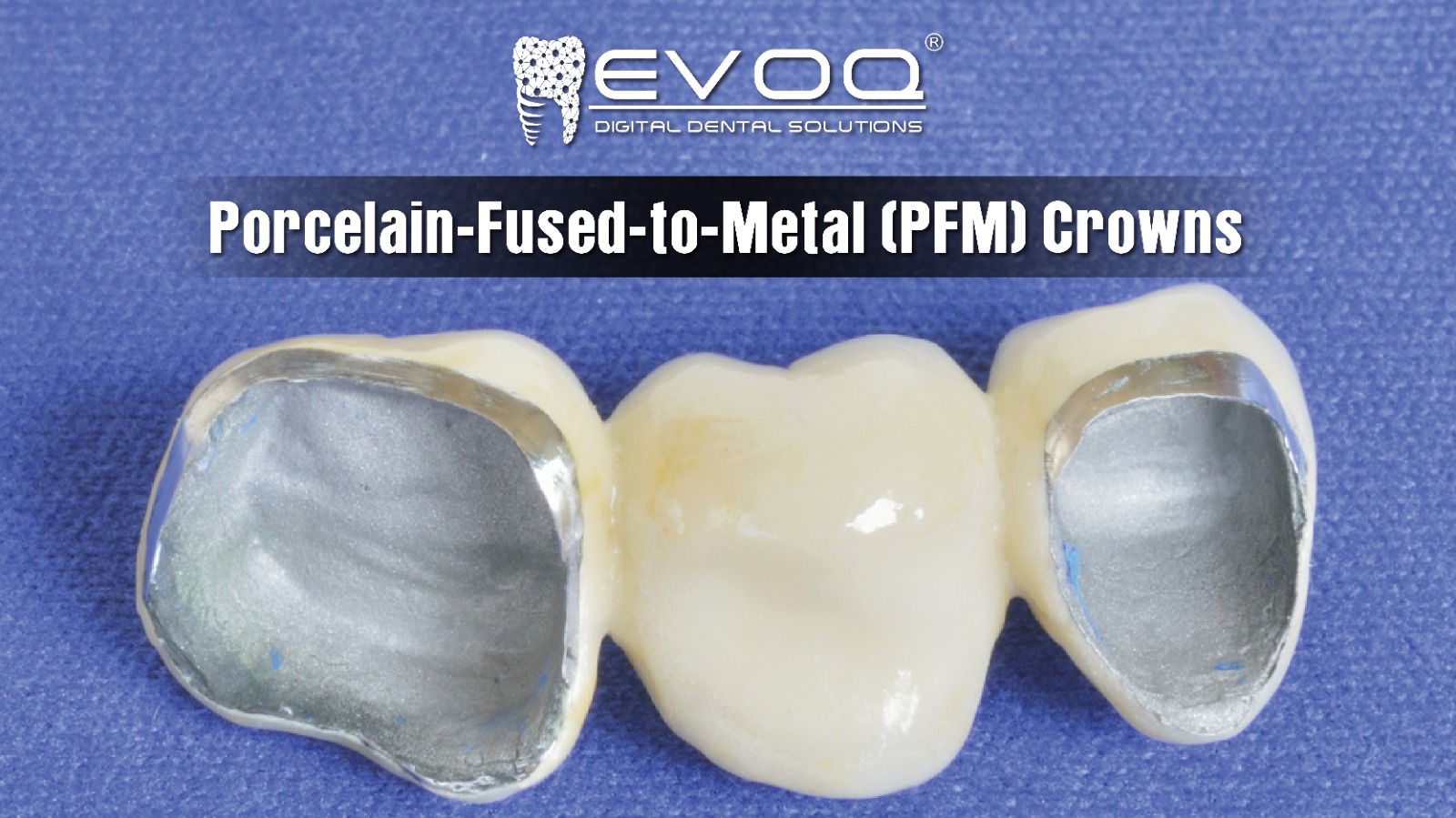
Porcelain-fused-to-metal (PFM) crowns have been a mainpoint in dental restorations for decades, offering a combination of strength and aesthetics. While newer materials like zirconia and all-ceramic crowns are gaining popularity, PFM crowns still have distinct advantages in certain clinical situations. In this blog, we’ll explore the advantages and disadvantages of PFM crowns, helping dentists and patients make informed decisions.
Advantages of Porcelain-Fused-to-Metal Crowns
- Strength
and Durability : PFM crowns are known for their high
strength because of the metal substructure that provides support to
the porcelain overlay. This makes them ideal for restorations in the
posterior region, where the forces of chewing are more. The metal base
helps the crown withstand heavy biting forces, reducing the risk of fractures.
- Aesthetic
Appeal : The porcelain layer fused to the metal
provides a natural tooth-like appearance, allowing PFM crowns to
blend well with adjacent natural teeth. This makes them suitable for both
anterior and posterior restorations.
- Long-Lasting : When
properly cared for, PFM crowns can last for many years. The durability
of the metal core ensures that the crown remains structurally sound,
while the porcelain maintains a natural look over time.
- Versatility : PFM
crowns can be used in a wide variety of dental restorations, including single
crowns, bridges, and even implant-supported restorations. Their
versatility and long track record of success make them a popular choice
for many dentists.
- Cost-Effective : PFM
crowns are often more affordable than all-ceramic or zirconia
crowns, making them a budget-friendly option for patients who need durable
and aesthetically pleasing restorations without breaking the bank.
Disadvantages of Porcelain-Fused-to-Metal
Crowns
- Metal
Exposure at the Gumline : One of the most common drawbacks of
PFM crowns is the potential for metal exposure at the gumline over
time. This can occur if the gums recede, revealing the metal substructure,
which can create an unsightly dark line. This issue is more common in
restorations near the front of the mouth where aesthetics are crucial.
- Porcelain
Chipping : While the metal substructure provides
strength, the porcelain overlay can be prone to chipping or
cracking, especially in patients with habits like teeth grinding
(bruxism) or if the bite is not properly aligned. Once chipped, the
porcelain may need to be repaired or replaced.
- Aesthetic
Limitations : While PFM crowns offer good
aesthetics, they are generally less translucent than all-ceramic or
zirconia crowns. This can make them appear slightly less natural,
especially in patients with thin or translucent natural teeth.
Additionally, the metal core can sometimes affect the color of the
porcelain, making it harder to match the exact shade of surrounding teeth.
- Allergy
& Sensitivity Concerns : Some patients may have allergies or
sensitivities to the metals used in PFM crowns, such as nickel or
other alloys. In these cases, alternative materials like zirconia or
all-ceramic crowns may be more suitable to avoid any potential adverse
reactions.
Conclusion
Porcelain-fused-to-metal
crowns offer a practical blend of strength, durability, and aesthetics, making
them a versatile solution for various dental restorations. However, they are
not without their drawbacks, such as metal exposure and potential chipping of
the porcelain.
Ultimately, choosing PFM crowns should be based on the specific needs of the patient, balancing factors such as budget, location of the restoration, and aesthetic expectations. For patients who need a long-lasting, reliable restoration in the back of the mouth, PFM crowns can be an excellent choice. However, for those who prioritize aesthetics or have metal sensitivities, alternatives like zirconia or all-ceramic crowns may be a better fit.
